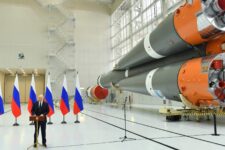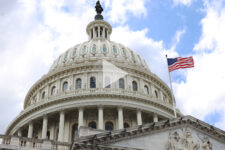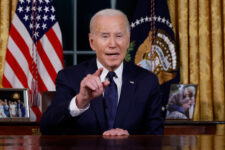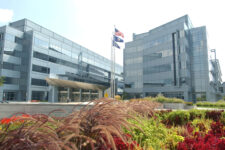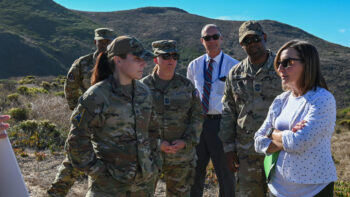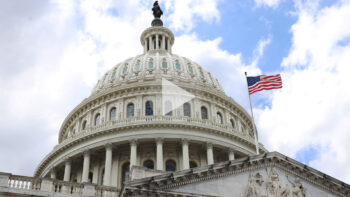
Gen. Chance Saltzman, Space Force Chief of Space Operations salutes during the Space Force Change of Responsibility ceremony at Joint Base Andrews, Nov. 1, 2022. Saltzman assumed responsibility from Gen. Jay Raymond at the ceremony. (DoD photo by Chad J. McNeeley)
WASHINGTON — The Pentagon expects to have a new, “substantial,” potentially-offensive classified capability in space by 2026, the head of the US Space Force told senators today.
Asked specifically by Sen. John Boozman, R-Ark, about what return on investment the Pentagon has gotten from appropriators adding funding to classified programs in the fiscal 2023 budget, Gen. Chance Saltzman, the chief of space operations, indicated at least one program had its timeline accelerated thanks to the extra money.
“I’m happy to say that, I expect that by the end of my tenure, if I make it all the way to [2026], that you’re going to see a substantial on-orbit capability that allows us to compete in full-spectrum operations,” he said. “I’m not sure I could have said that two years ago. But the fact that we’ve accelerated the programs and we’ve built a program that delivers a capability in terms of three, four or five years, I’m very comfortable that we have a program in place that will do just that.”
The phrase “full-spectrum operations” would indicate something with the ability to do both offensive and defensive operations if needed. While the Pentagon is always cautious about describing — or even acknowledging — that it has on-orbit capabilities that could damage or interfere with the space assets of other countries, the department has slowly become more open over the years about the fact that it is at least developing such systems.
Congress added $17 billion to the Space Force’s FY23 budget request, raising the total to $26.3 billion — much of that slated for classified programs. The Space Force in March asked lawmakers to add a total of $477.3 million for unfunded priorities to its $30 billion FY24 budget request. The vast bulk of the funding included in the wish list is targeted at six classified programs which are not even named in the public list.
Asked to comment on Saltzman’s statement, service spokesperson Maj. Victoria Porto said that “While we can’t provide further information on our classified programs, we are pleased with the support the Space Force received last year from Congress, and look forward to continued support with this year’s budget request—a 15 percent increase over FY23.”
During the same line of questioning in front of the Senate Appropriations defense subcommittee, Saltzman also acknowledged that the budget process can sometimes be messy, and involve competing priorities. Asked by Boozman about programs that did not make it into the main budget but were in the Space Force’s unfunded priorities list, Saltzman said “in the end, I think all these resourcing issues do come down to some level of priorities and where we’re willing to fall on our sword or not.”
“I’m comfortable with the level of resourcing we have, especially in the classified programs. I think there was some back and forth towards the end of the budget submission, that maybe aligned funds in a way that we’re going to have to figure out other ways to manage the programs, for example,” Saltzman continued. “But we have those ways, we can collaborate with the other stakeholders, we can make sure that our concepts of operations are clean, and that we can put the right kinds of demand signals, for example, on partners that are building capabilities for us.”
That would seem to be a reference to the fact that the Space Force is just one of many different space agencies, which often have overlapping capability sets. The National Reconnaissance Organization, for example, has its own pots of money and acquisition strategies, which while not tied into DoD officially have obvious overlap.
“So I feel like although it may not be the way we would have designed it, I feel like I’m comfortable that we have the kinds of mechanisms in place to collaborate appropriately and get what we need in place,” Saltzman concluded.




